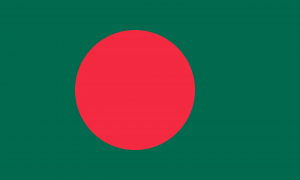Difference between revisions of "Language/Bengali/Grammar/Comparison"
m (Quick edit) |
m (Quick edit) |
||
| Line 1: | Line 1: | ||
<span pgnav> | |||
{| class="wikitable pg_template_nav" | |||
|[[Language/Bengali/Grammar/Types-of-Adjectives|◀️ Types of Adjectives — Previous Lesson]] | |||
|[[Language/Bengali/Culture/Festivals|Next Lesson — Festivals ▶️]] | |||
|} | |||
</span> | |||
{{Bengali-Page-Top}} | {{Bengali-Page-Top}} | ||
| Line 112: | Line 119: | ||
{{Bengali-Page-Bottom}} | {{Bengali-Page-Bottom}} | ||
<span links></span> | <span links></span> | ||
<span pgnav> | |||
{| class="wikitable pg_template_nav" | |||
|[[Language/Bengali/Grammar/Types-of-Adjectives|◀️ Types of Adjectives — Previous Lesson]] | |||
|[[Language/Bengali/Culture/Festivals|Next Lesson — Festivals ▶️]] | |||
|} | |||
</span> | |||
Revision as of 18:30, 29 March 2023
| ◀️ Types of Adjectives — Previous Lesson | Next Lesson — Festivals ▶️ |
As a Bengali language teacher with over 20 years of experience, I am excited to teach you how to make comparisons using Bengali adjectives and adverbs. This is an important topic that will help you express yourself more precisely in Bengali. In this lesson, we will cover the following topics:
Consider exploring these related pages after completing this lesson: Coordinating Conjunctions & Question Words.
Types of Comparison
There are three types of comparisons that we use in Bengali:
- Positive comparison
- Comparative comparison
- Superlative comparison
Positive Comparison
A positive comparison is used when we want to talk about one thing or person. It is the simplest form of comparison in Bengali. To form a positive comparison, we use the positive form of an adjective or adverb. For example:
| Bengali | Pronunciation | English |
|---|---|---|
| বড় | bor | big |
| সুন্দর | sundor | beautiful |
| ভালো | bhalo | good |
Comparative Comparison
A comparative comparison is used when we want to compare two things or people. In Bengali, we form the comparative comparison by adding the suffix "-তর" ("-tor") to the adjective or adverb. For example:
| Bengali | Pronunciation | English |
|---|---|---|
| বড়তর | bortor | bigger |
| সুন্দরতর | sundortor | more beautiful |
| ভালোতর | bhalotor | better |
In some cases, we might also use the word "আরো" ("aro") before the adjective or adverb to mean "more". For example:
| Bengali | Pronunciation | English |
|---|---|---|
| আরো বড় | aro bor | bigger |
| আরো সুন্দর | aro sundor | more beautiful |
| আরো ভালো | aro bhalo | better |
Superlative Comparison
A superlative comparison is used when we want to compare one thing or person to a group of things or people. In Bengali, we form the superlative comparison by adding the suffix "-তম" ("-tom") to the adjective or adverb. For example:
| Bengali | Pronunciation | English |
|---|---|---|
| বড়তম | bortom | biggest |
| সুন্দরতম | sundortom | most beautiful |
| ভালোতম | bhalotom | best |
In some cases, we might also use the word "সবচেয়ে" ("shobcheye") before the adjective or adverb to mean "most". For example:
| Bengali | Pronunciation | English |
|---|---|---|
| সবচেয়ে বড় | shobcheye bor | biggest |
| সবচেয়ে সুন্দর | shobcheye sundor | most beautiful |
| সবচেয়ে ভালো | shobcheye bhalo | best |
Conclusion
Making comparisons is an essential part of speaking and writing in Bengali. In this lesson, we covered the three types of comparisons and the rules for forming them using adjectives and adverbs. As you continue to learn Bengali, keep practicing these rules so that you can use them effectively in your communication.
With this lesson finished, you may want to explore these additional pages: Adjectives & How to Use Have.
Other Lessons
- Give your Opinion
- Coordinating Conjunctions
- Future Tense
- Subject and Object
- Question Formation
- Negation
- Types of Adverbs
- Plurals
- Conditional Mood
- Question Words
| ◀️ Types of Adjectives — Previous Lesson | Next Lesson — Festivals ▶️ |
